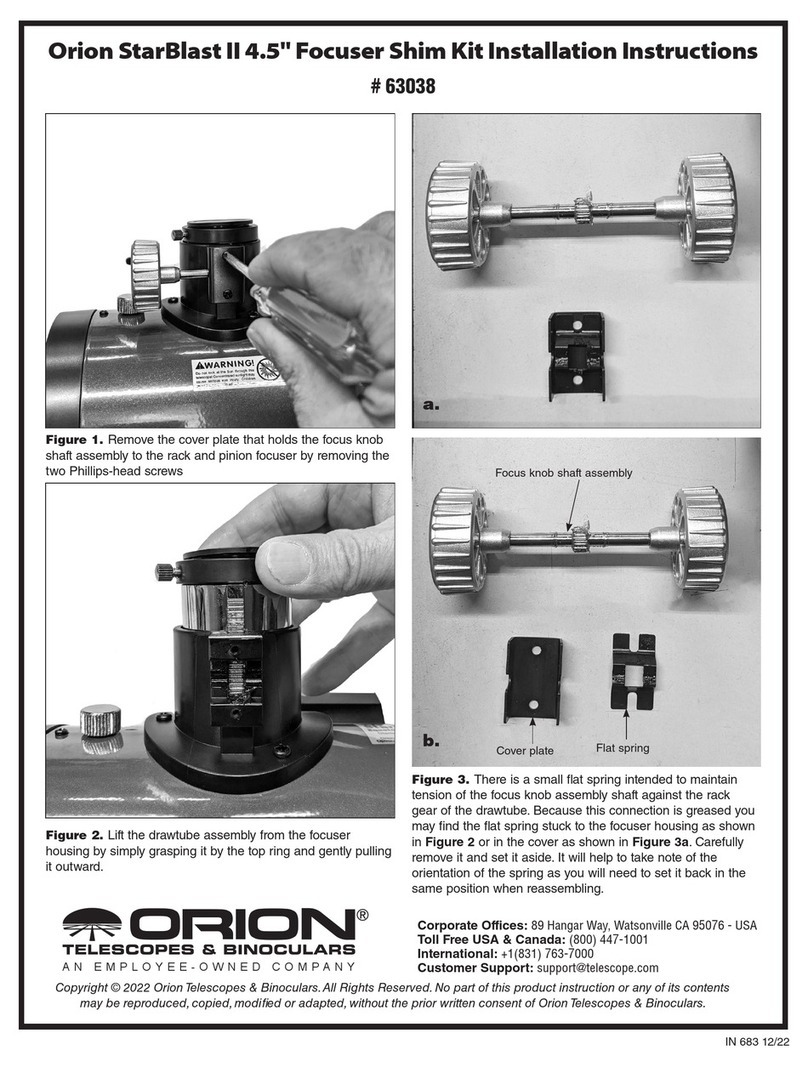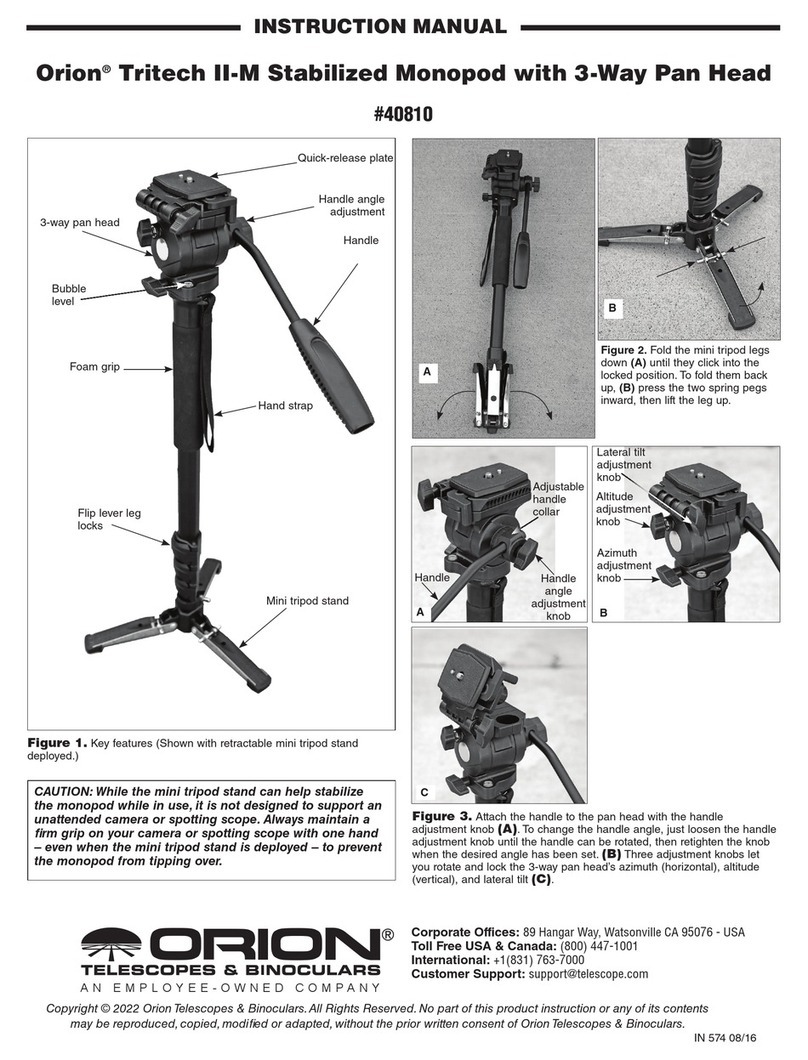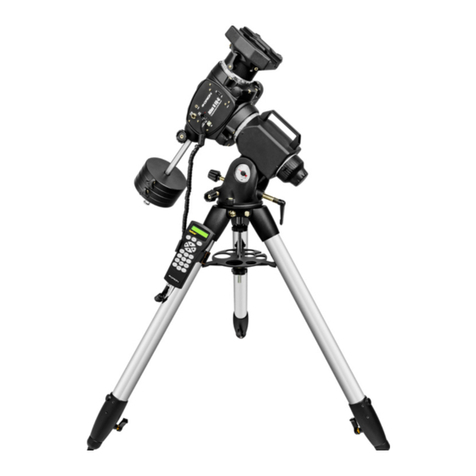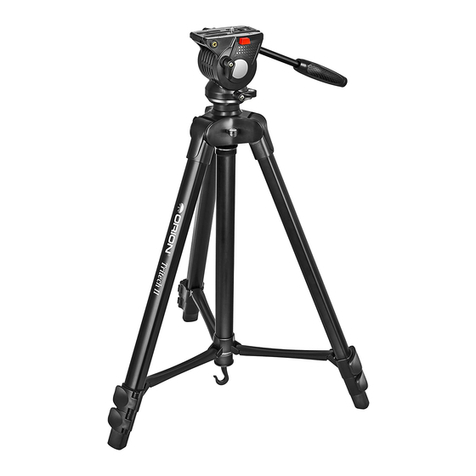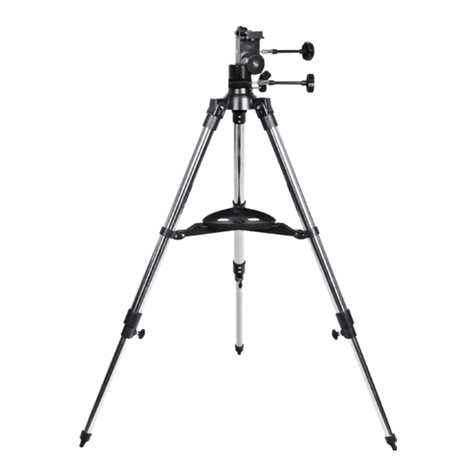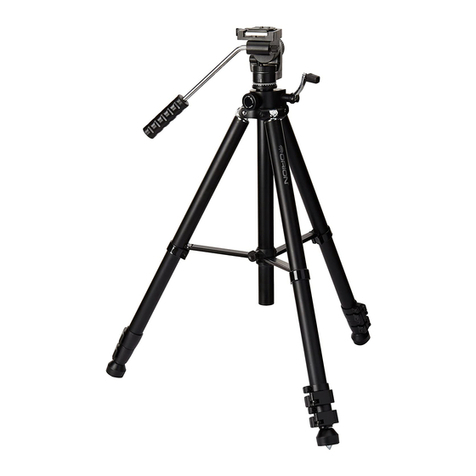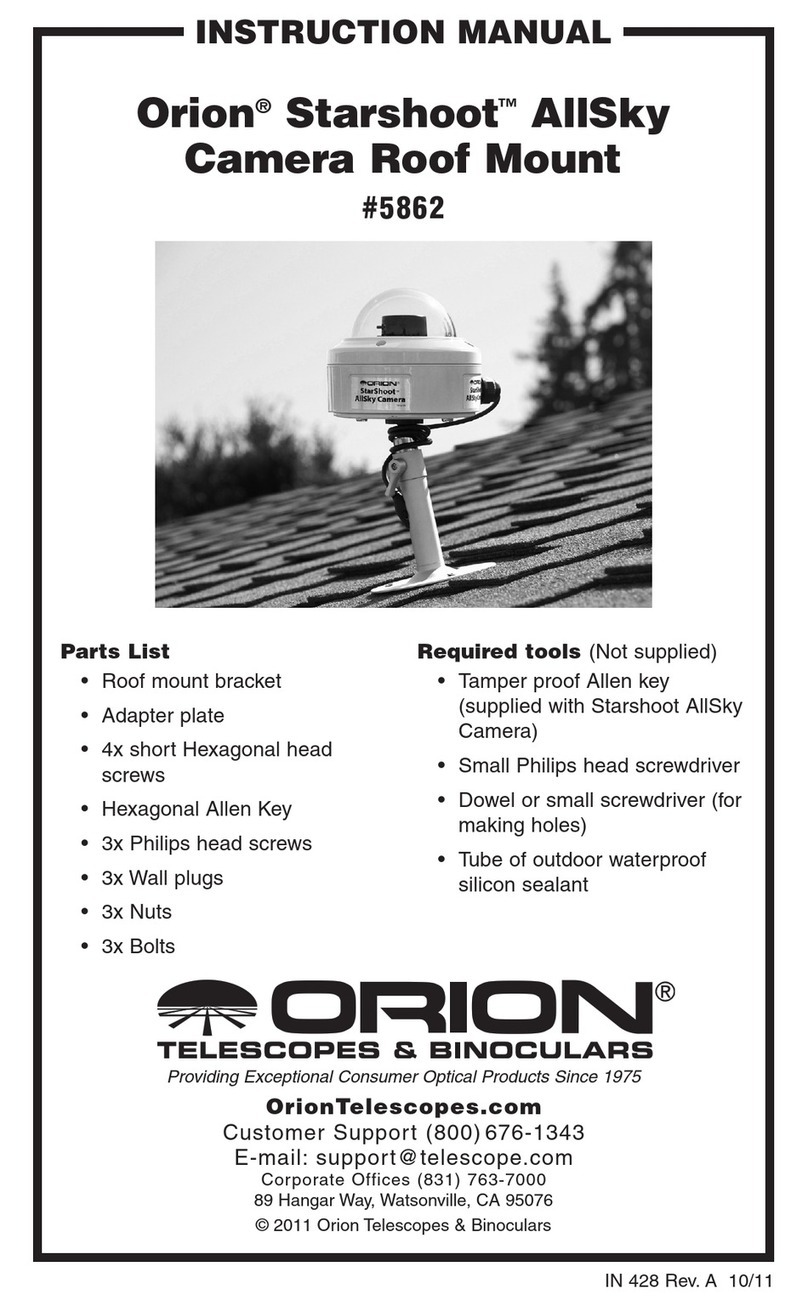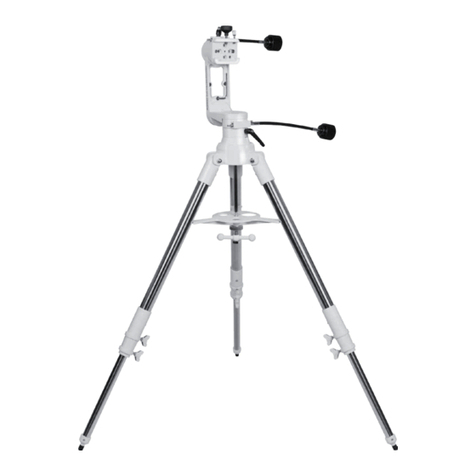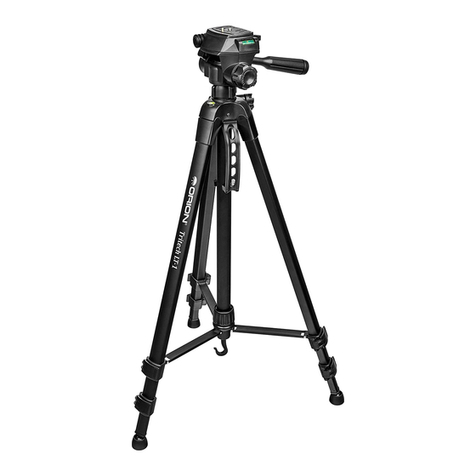
4
5. Press the power button for approximately 1 second to turn
the system on. The red light will appear when on (Figure 9).
6. Wait for the scope to nd the horizontal position for the
tube, and then the red light will begin blinking, indicating
the GPS signal is being acquired. This may take a few
moments, and if it doesn’t begin to nd the sun after a min-
ute or two, there may be interference from the GPS signal.
Move to a new location away from buildings or trees, and
try again.
7. When the GPS location is found, the mount will automati-
cally direct the scope up to the proper altitude angle for the
sun, and then begin a horizontal sweep using the camera,
in order to acquire the sun. If you previously positioned the
tripod so the scope was facing the horizon directly below
the sun, the mount should acquire the sun quickly, without
having to sweep in a wide circle.
8. When the mount stops moving, the sun should be some-
where within the field of a low power eyepiece. Look
through the eyepiece (verifying you have a solar filter
attached rst!) to nd the sun. It may not be centered,
based on the alignment of your dovetail bar, cradle and
optical path, so slide the large button labeled CENTER on
the control panel towards one of the four arrows around
the button in order to calibrate the unit and center the sun
(Figure 9). Once centered, the mount will continue to track
the sun!
9. When you are nished with your observing session, press
the power button for approximately 3 seconds to power the
unit down. Return the scope to the horizontal position so
you’re ready for the next outing!
4.Care and Cleaning of the Starseeker Mount
If your mount accumulates dirt/dust while operating, wipe with
a soft cloth after use. Clean the mount with mild household
detergent and a soft cloth. Keep the mount in a clean and
dry environment when not in use, and do not store the mount
outdoors.
To prevent damage, we recommend removing your telescope
or optical instrument from the mount when transporting.
5.Technical Specifications
Mount: Altazimuth fork arm
Tripod: Aluminum
Tripod Height: Range of 37.5" - 57" from ground to
center of dovetail cradle
Total Weight: 8 lbs.
Motor Drives: Dual-axis geared go-to, internally
housed
Power requirement: 8 AA batteries
Tracking Rate: Solar
Alignment method: GPS data, plus CCD sensor
acquisition
Corporate Offices: 89 Hangar Way, Watsonville CA 95076 - USA
Toll Free USA & Canada: (800) 447-1001
International: +1(831) 763-7000
Copyright © 2020 Orion Telescopes & Binoculars.All Rights Reserved. No part of this product instruction or any of its contents
may be reproduced, copied, modied or adapted, without the prior written consent of Orion Telescopes & Binoculars.
AN EMPLOYEE-OWNED COMPANY
One-Year Limited Warranty
This Orion product is warranted against defects in materials or workmanship for a period of one year from
the date of purchase. This warranty is for the benet of the original retail purchaser only. During this war-
ranty period Orion Telescopes & Binoculars will repair or replace, at Orion’s option, any warranted instru-
ment that proves to be defective, provided it is returned postage paid. Proof of purchase (such as a copy of
the original receipt) is required. This warranty is only valid in the country of purchase.
This warranty does not apply if, in Orion’s judgment, the instrument has been abused, mishandled, or
modied, nor does it apply to normal wear and tear. This warranty gives you specic legal rights. It is not
intended to remove or restrict your other legal rights under applicable local consumer law; your state or
national statutory consumer rights governing the sale of consumer goods remain fully applicable.
For further warranty information, please visit www.OrionTelescopes.com/warranty.


